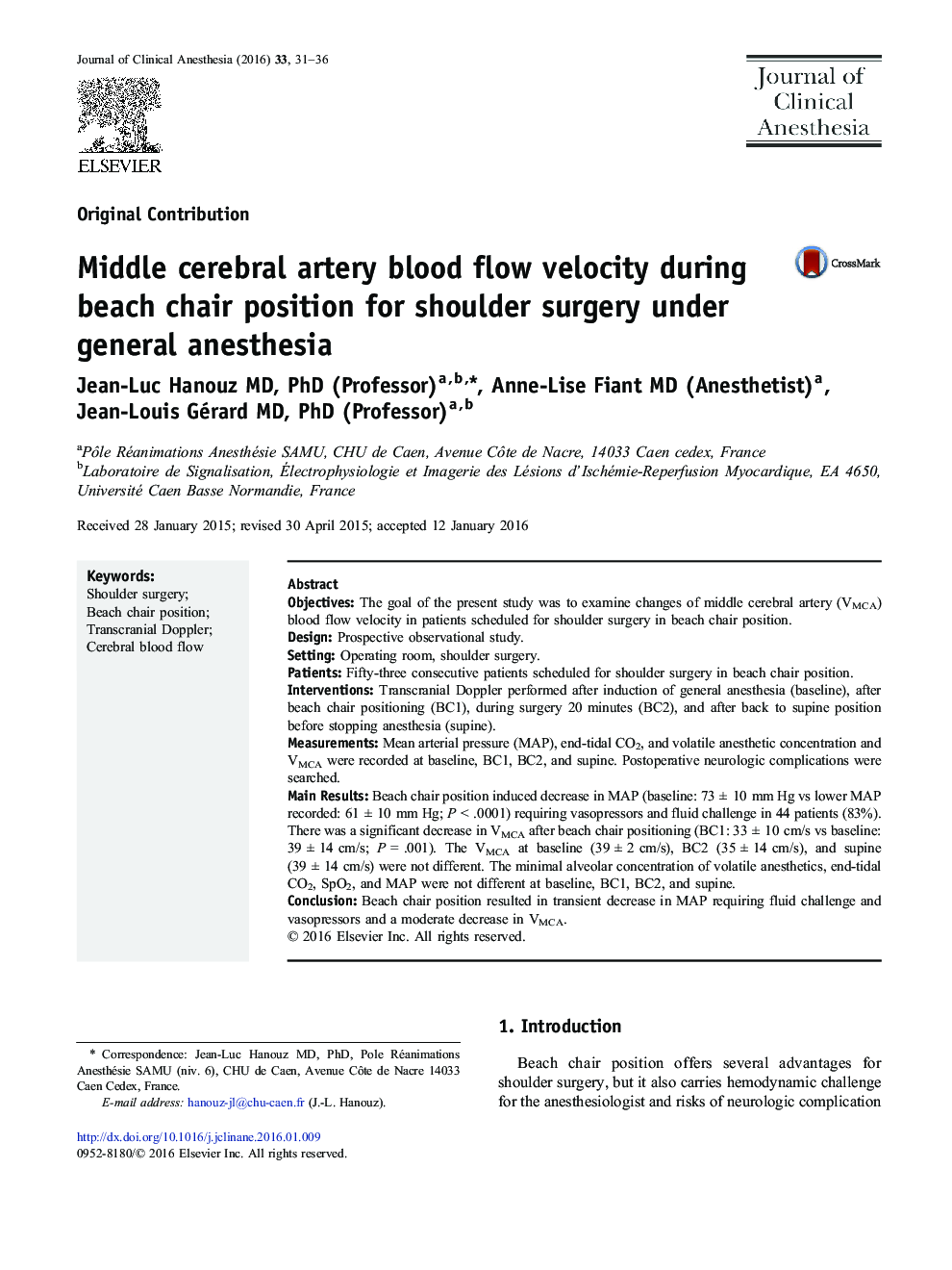| Article ID | Journal | Published Year | Pages | File Type |
|---|---|---|---|---|
| 2762091 | Journal of Clinical Anesthesia | 2016 | 6 Pages |
•The decrease in mean arterial pressure after beach chair positioning required large amounts of fluids and vasopressor administration.•Transcranial Doppler is feasible during surgery in beach chair position and may help anesthetist to evaluate cerebral hemodynamic.•The decrease in blood flow velocity in the middle cerebral artery remains moderate and transient.•No relationship exists between hemodynamic and intraarticular visualization during surgery.
ObjectivesThe goal of the present study was to examine changes of middle cerebral artery (VMCA) blood flow velocity in patients scheduled for shoulder surgery in beach chair position.DesignProspective observational study.SettingOperating room, shoulder surgery.PatientsFifty-three consecutive patients scheduled for shoulder surgery in beach chair position.InterventionsTranscranial Doppler performed after induction of general anesthesia (baseline), after beach chair positioning (BC1), during surgery 20 minutes (BC2), and after back to supine position before stopping anesthesia (supine).MeasurementsMean arterial pressure (MAP), end-tidal CO2, and volatile anesthetic concentration and VMCA were recorded at baseline, BC1, BC2, and supine. Postoperative neurologic complications were searched.Main ResultsBeach chair position induced decrease in MAP (baseline: 73 ± 10 mm Hg vs lower MAP recorded: 61 ± 10 mm Hg; P < .0001) requiring vasopressors and fluid challenge in 44 patients (83%). There was a significant decrease in VMCA after beach chair positioning (BC1: 33 ± 10 cm/s vs baseline: 39 ± 14 cm/s; P = .001). The VMCA at baseline (39 ± 2 cm/s), BC2 (35 ± 14 cm/s), and supine (39 ± 14 cm/s) were not different. The minimal alveolar concentration of volatile anesthetics, end-tidal CO2, SpO2, and MAP were not different at baseline, BC1, BC2, and supine.ConclusionBeach chair position resulted in transient decrease in MAP requiring fluid challenge and vasopressors and a moderate decrease in VMCA.
